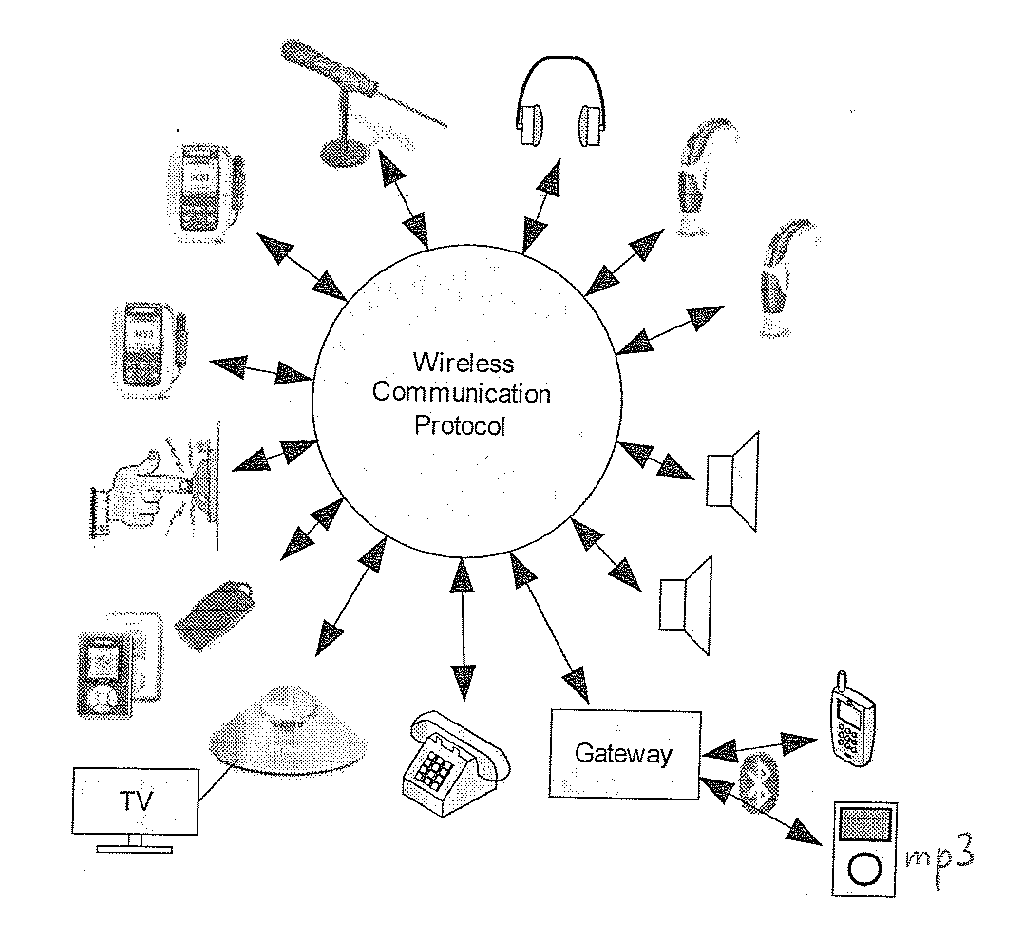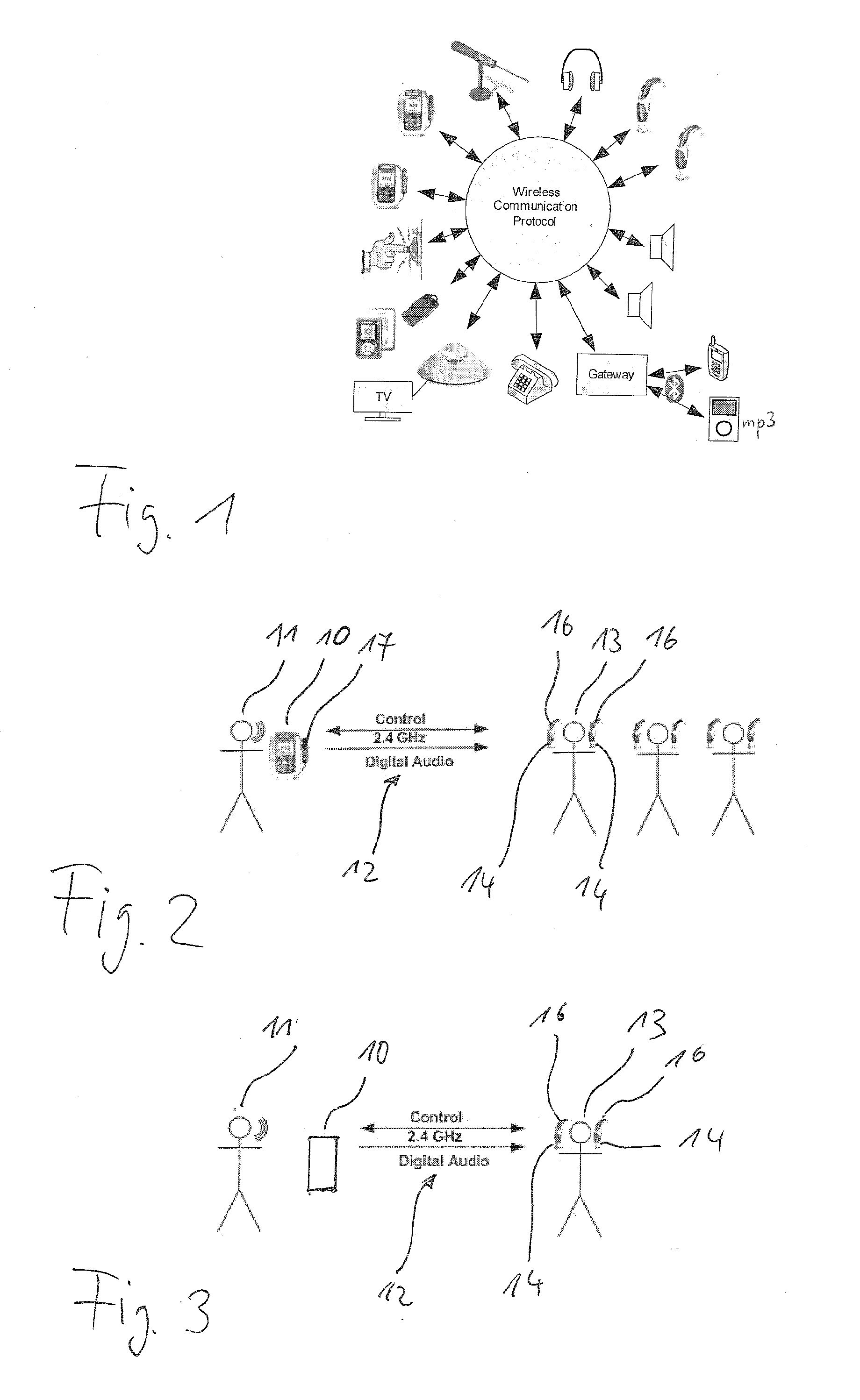Wireless sound transmission system and method using improved frequency hopping and power saving mode
a technology of frequency hopping and power saving mode, applied in the direction of power management, sustainable buildings, and restrictions, to achieve the effect of reducing power consumption, further power consumption reduction, and reducing power consumption
- Summary
- Abstract
- Description
- Claims
- Application Information
AI Technical Summary
Benefits of technology
Problems solved by technology
Method used
Image
Examples
Embodiment Construction
[0055]The present invention relates to a system for providing hearing assistance to at least one user, wherein audio signals are transmitted from an audio signal source via a wireless digital audio link, using a transmission unit comprising a digital transmitter, to at least one receiver unit, from which the audio signals are supplied to means for stimulating the hearing of the user, typically a loudspeaker.
[0056]As shown in FIG. 1, the device used on the transmission side may, for example, be a wireless microphone used by a speaker in a room for an audience; an audio transmitter having an integrated or a cable-connected microphone which are used by teachers in a classroom for hearing-impaired pupils / students; an acoustic alarm system, like a door bell, a fire alarm or a baby monitor; an audio or video player; a television device; a telephone device; a gateway to audio sources like a mobile phone, music player; etc. The transmission devices include body-worn devices as well as fixed...
PUM
 Login to View More
Login to View More Abstract
Description
Claims
Application Information
 Login to View More
Login to View More - R&D Engineer
- R&D Manager
- IP Professional
- Industry Leading Data Capabilities
- Powerful AI technology
- Patent DNA Extraction
Browse by: Latest US Patents, China's latest patents, Technical Efficacy Thesaurus, Application Domain, Technology Topic, Popular Technical Reports.
© 2024 PatSnap. All rights reserved.Legal|Privacy policy|Modern Slavery Act Transparency Statement|Sitemap|About US| Contact US: help@patsnap.com










